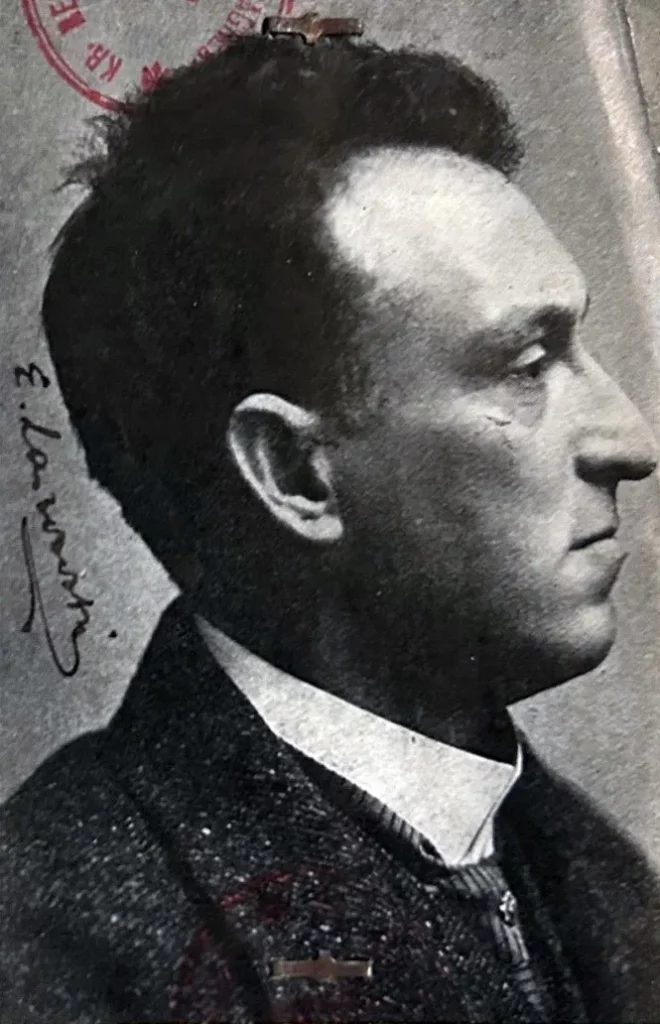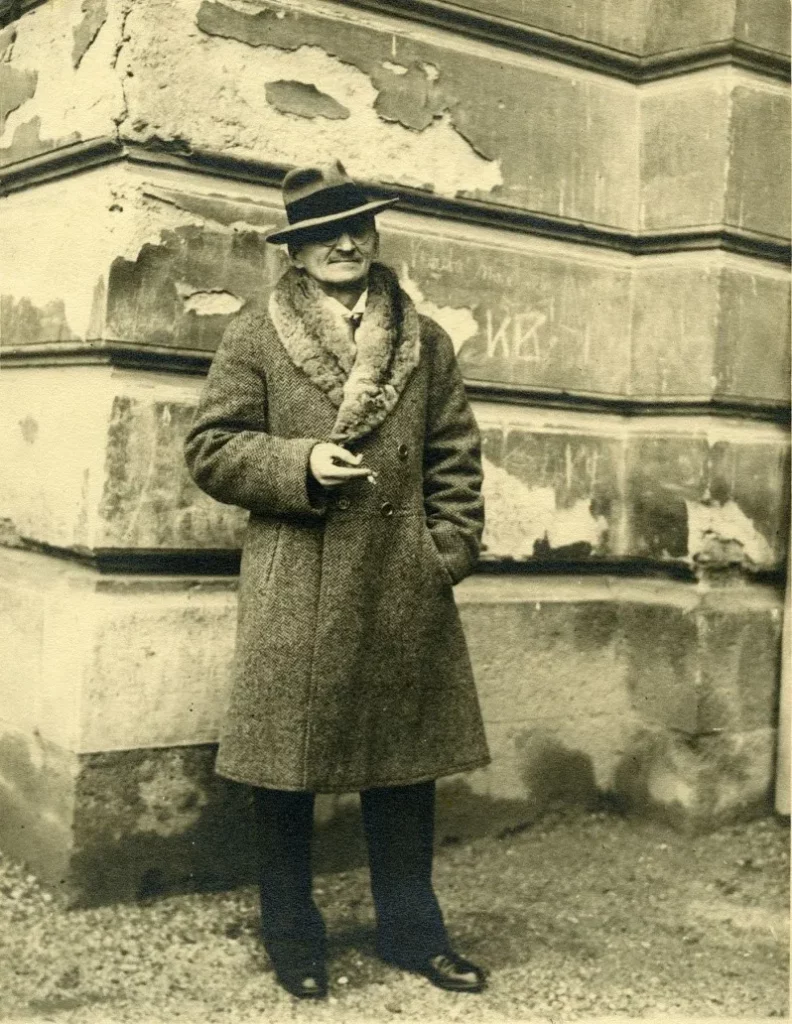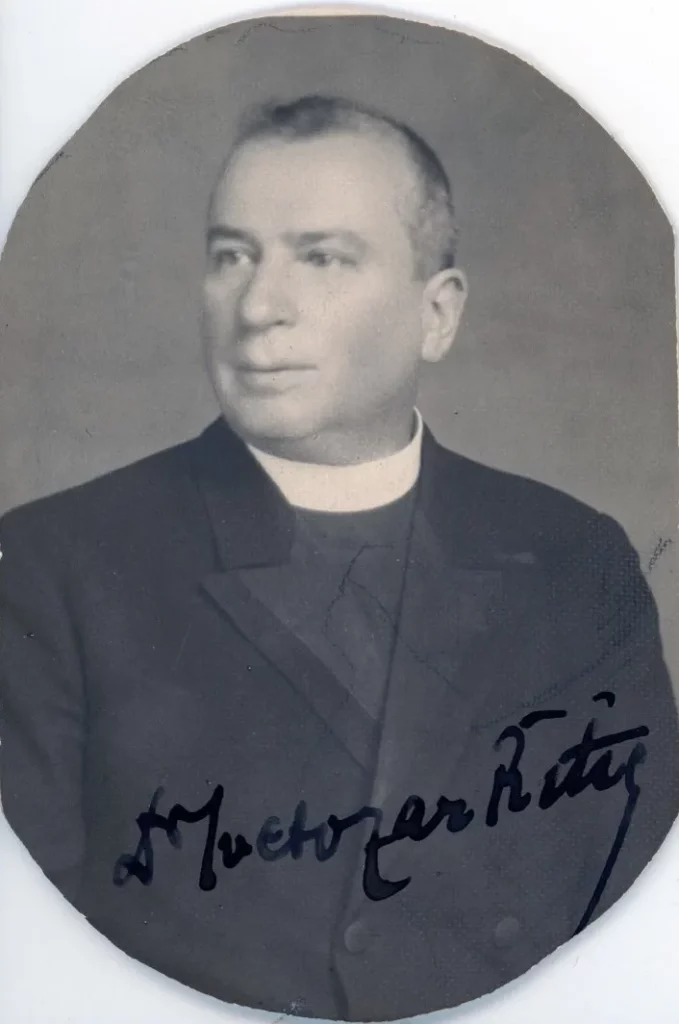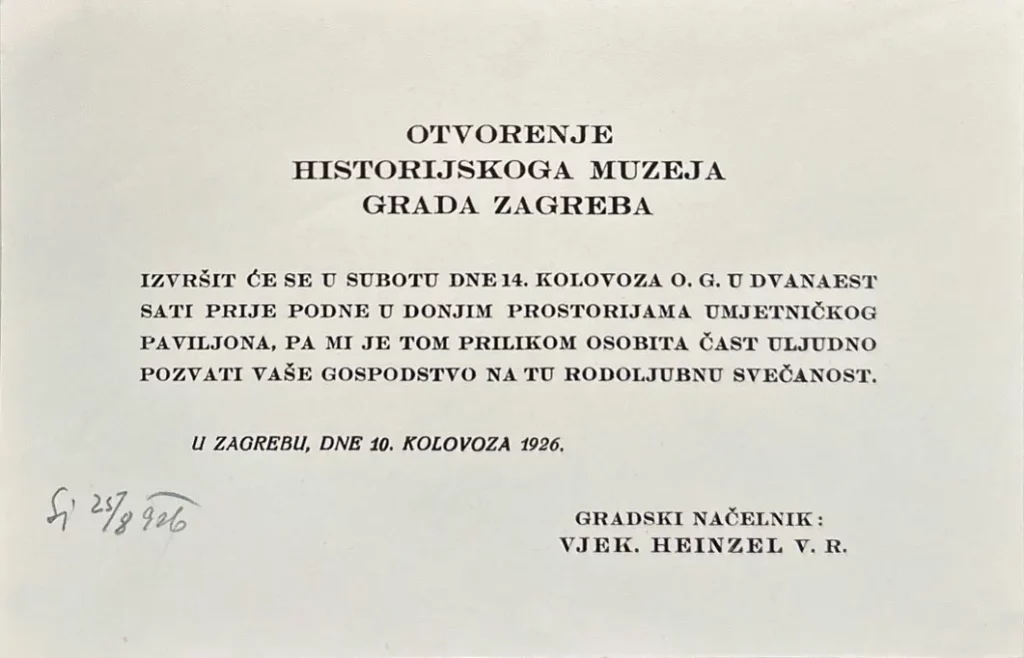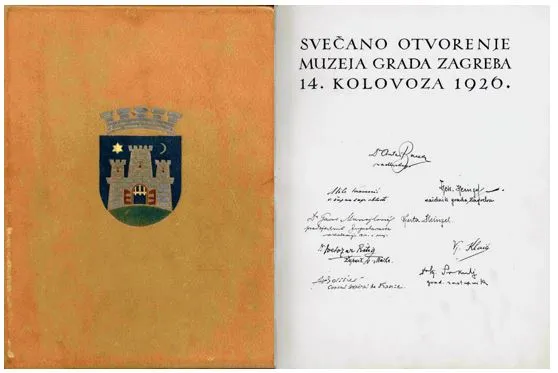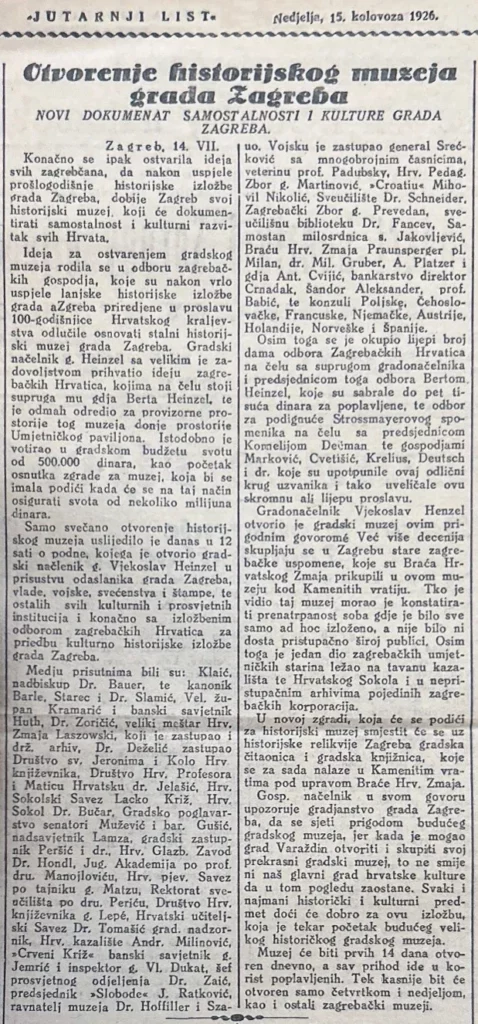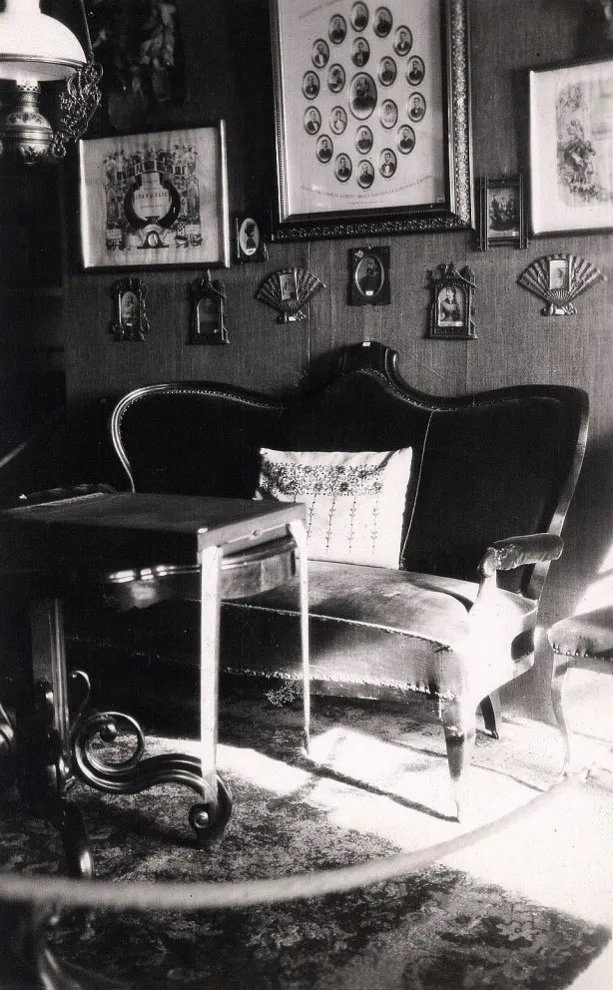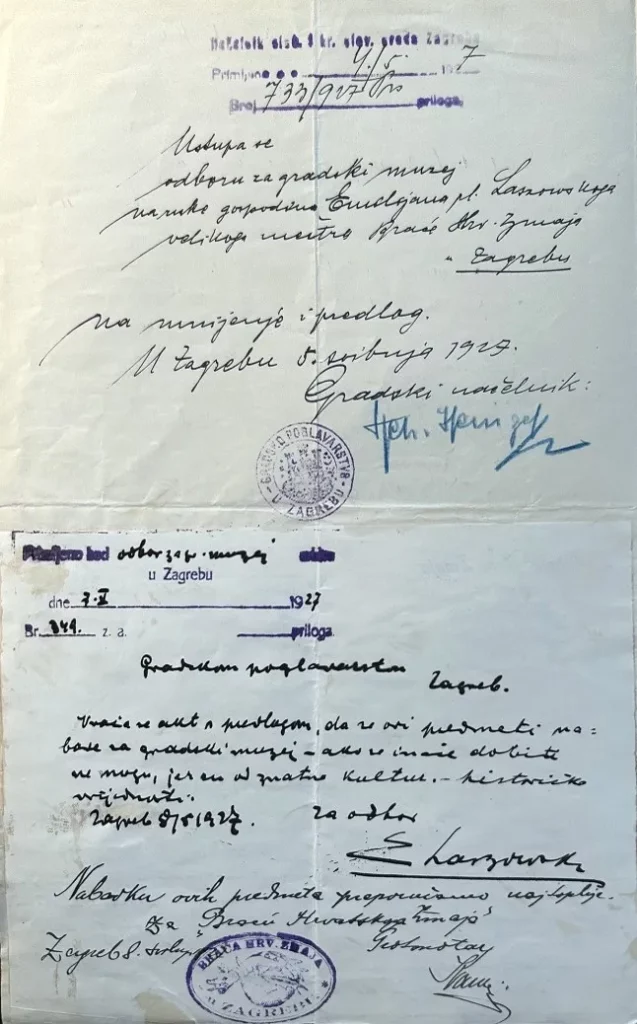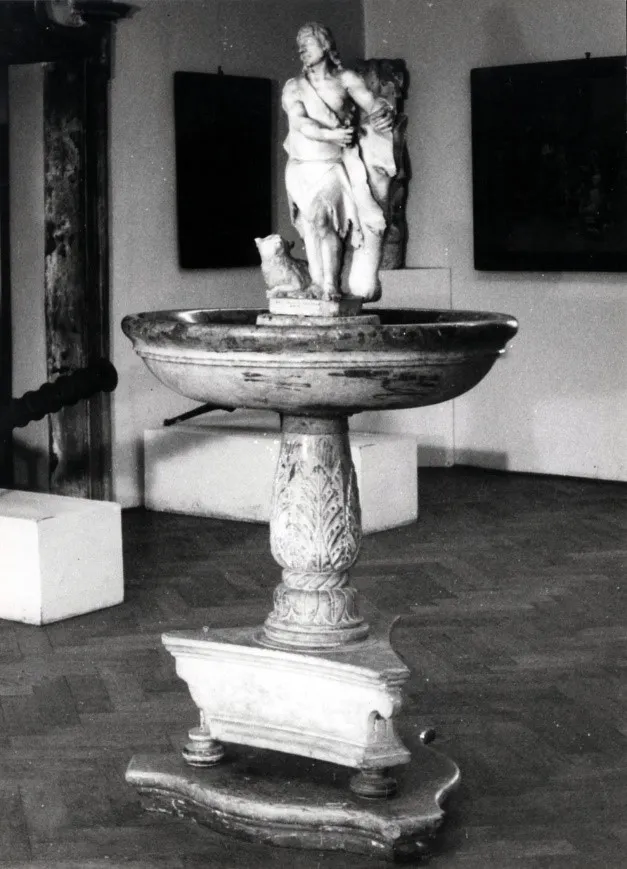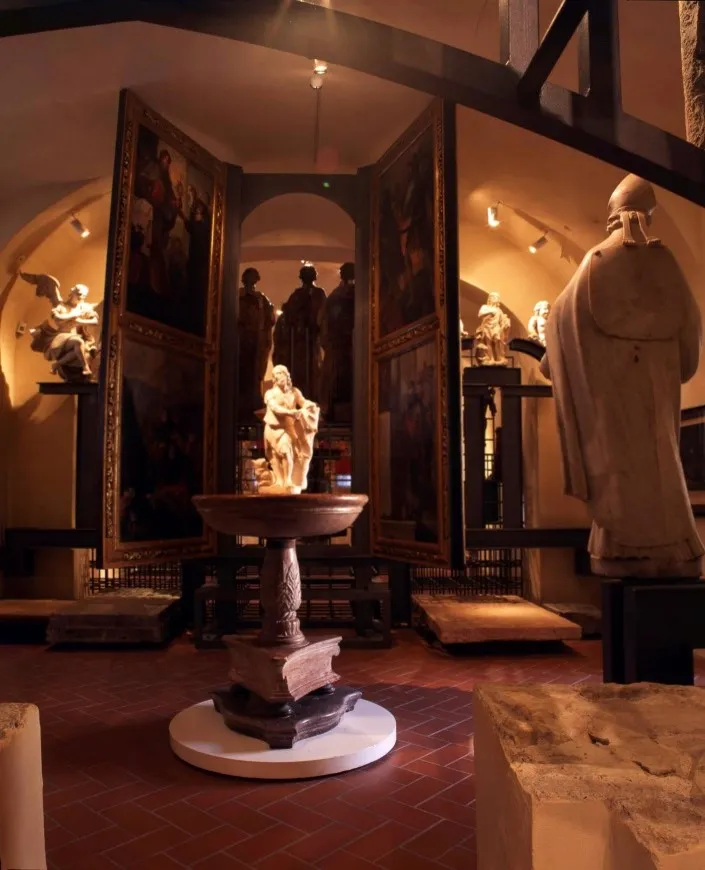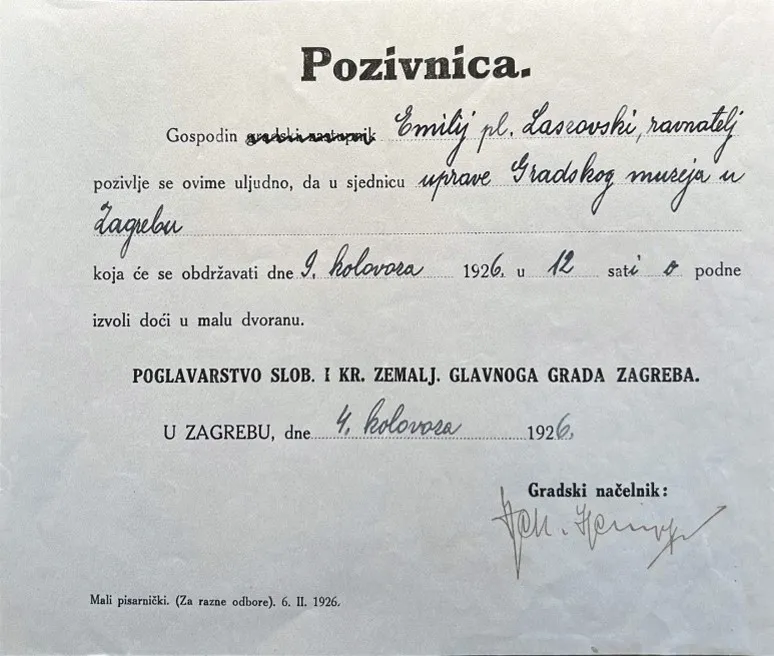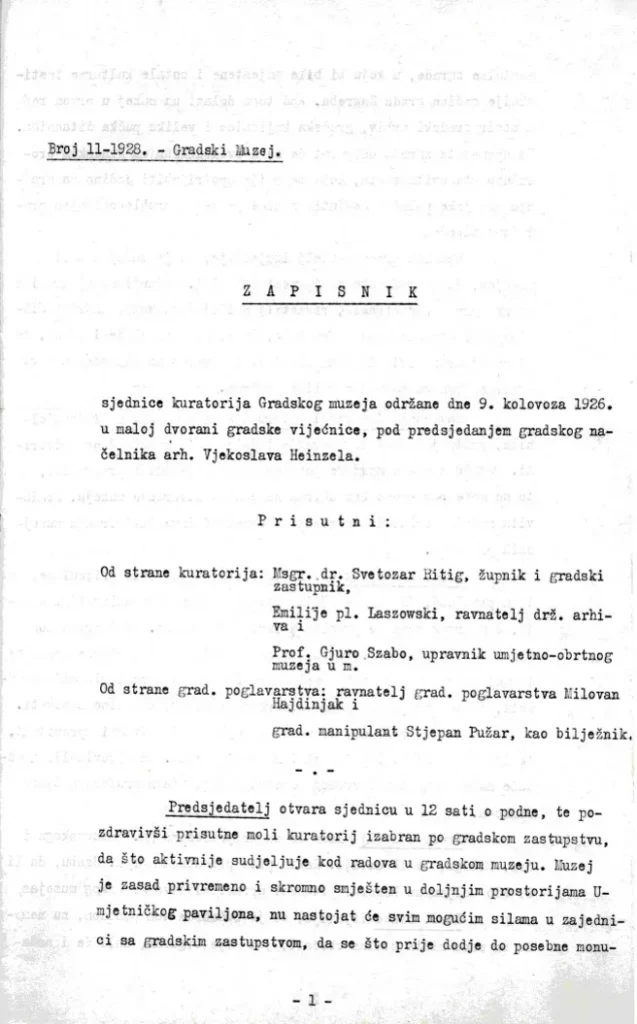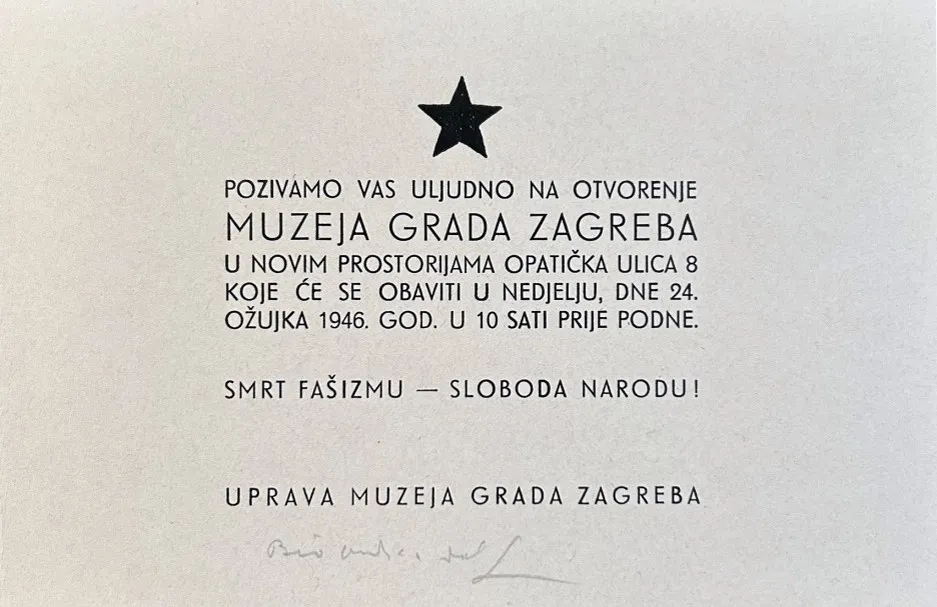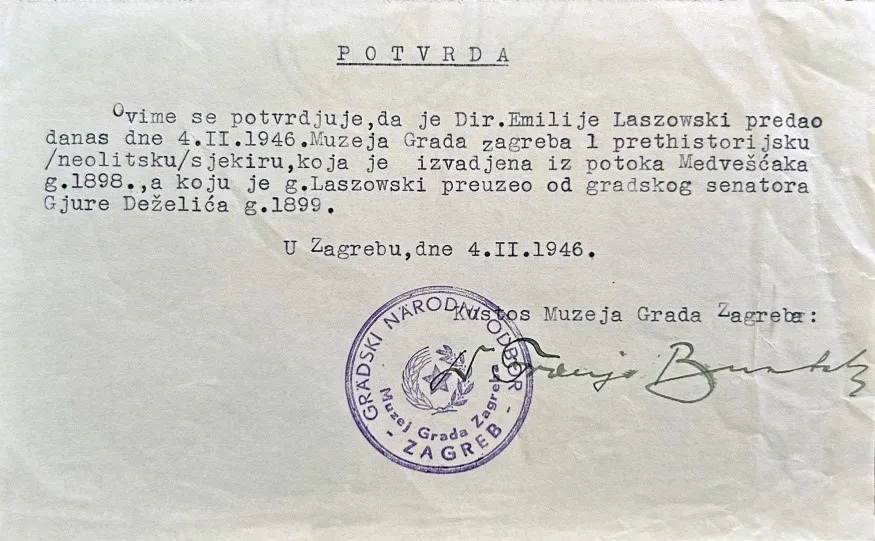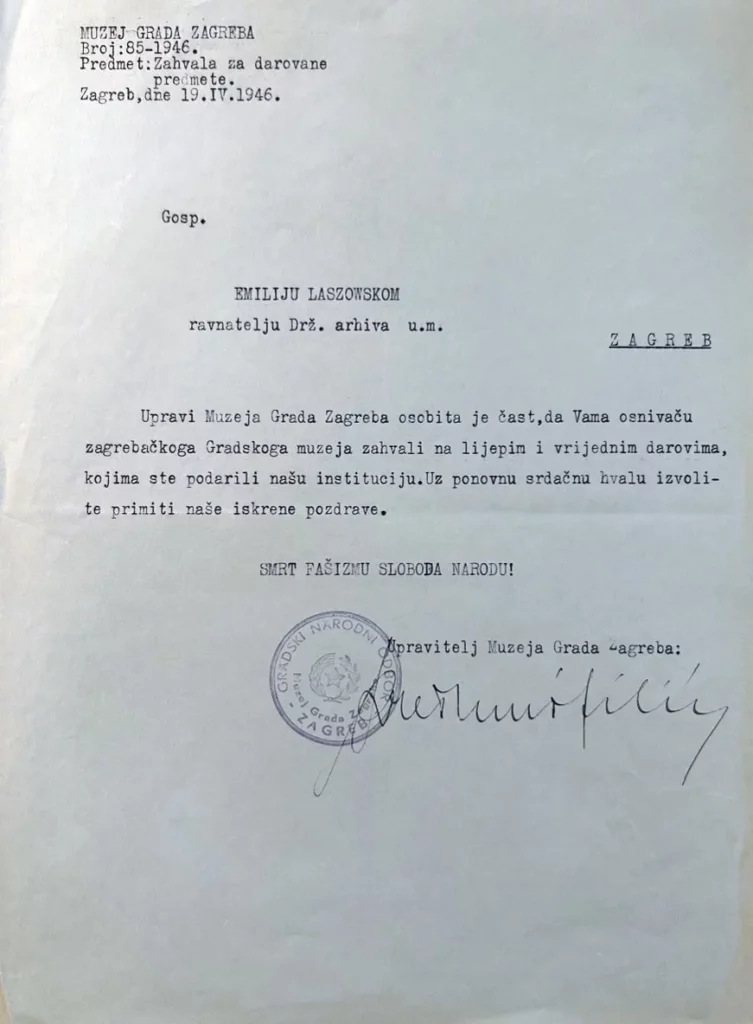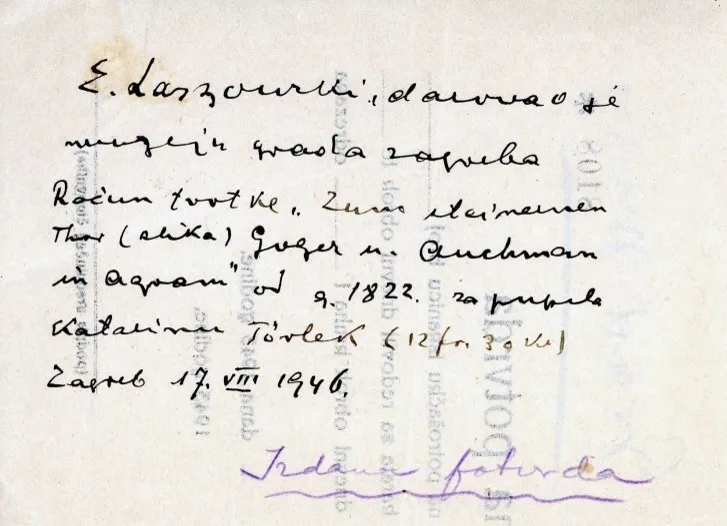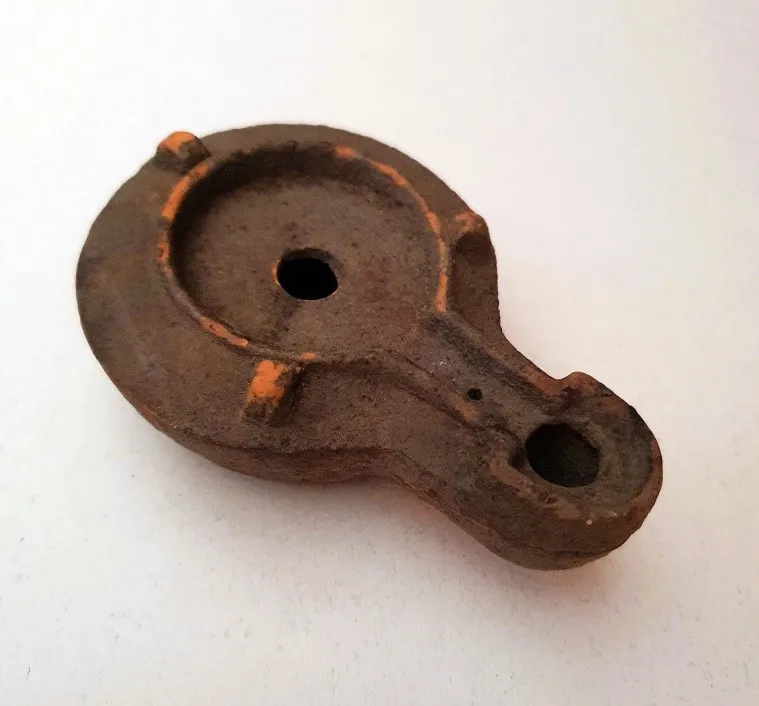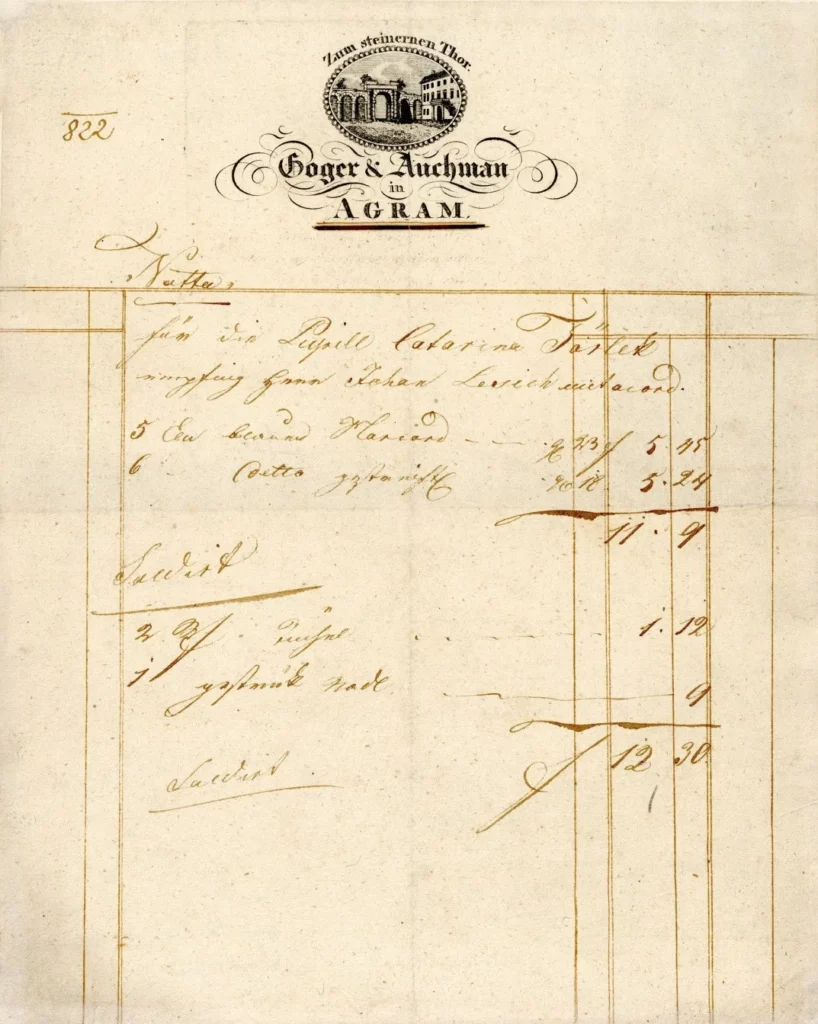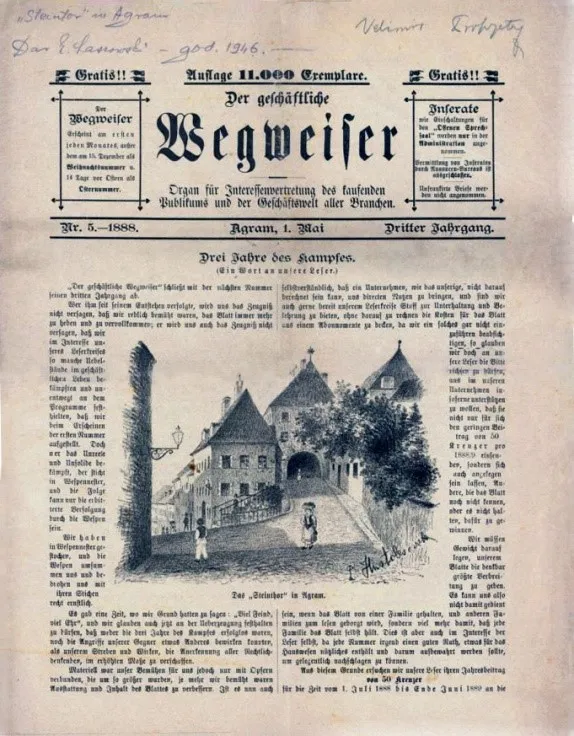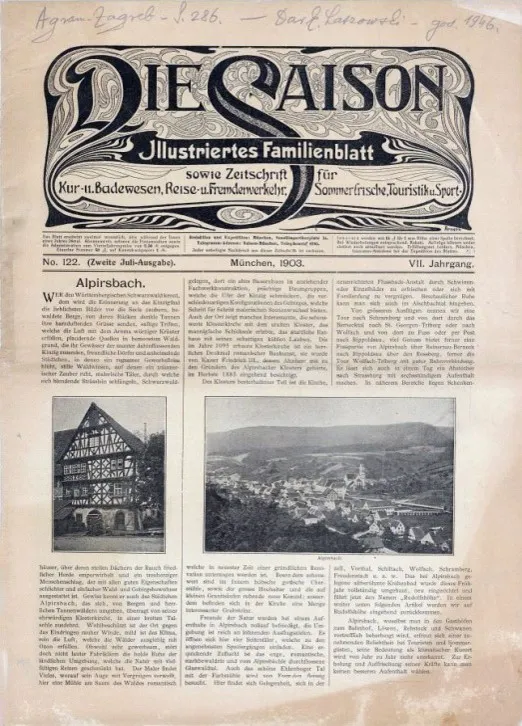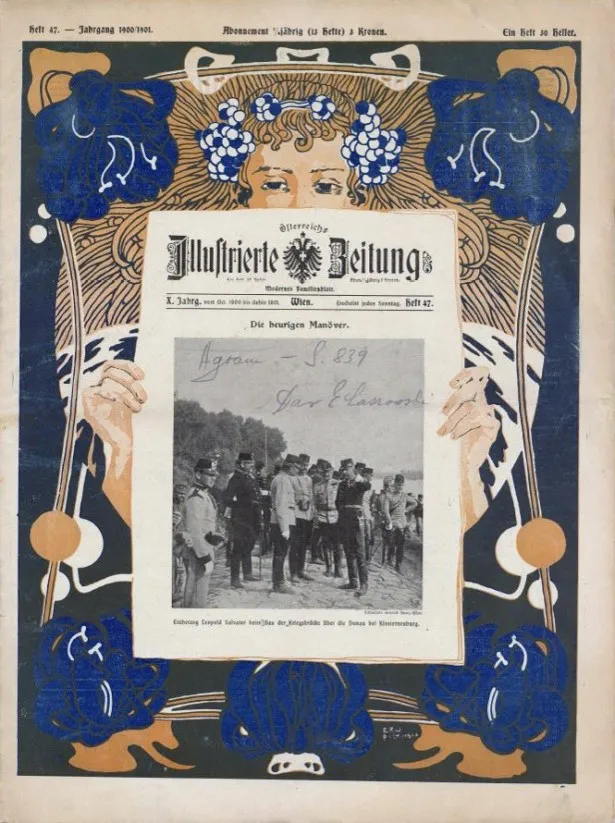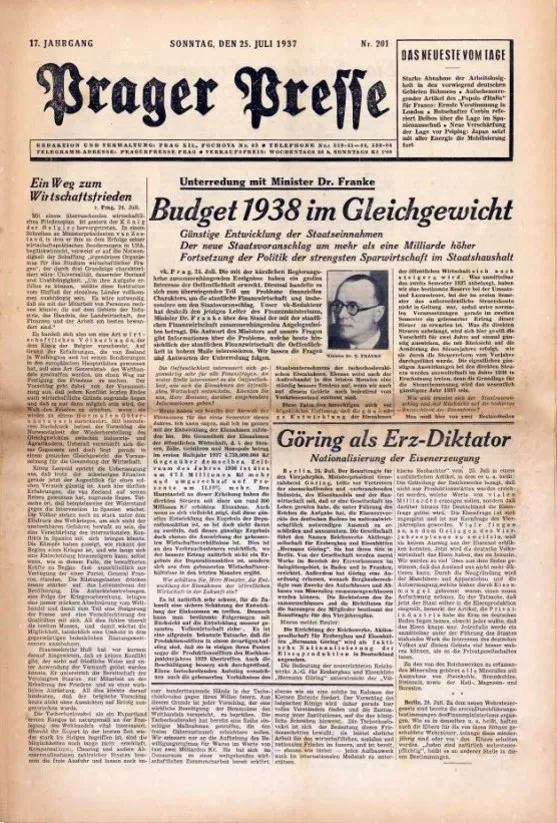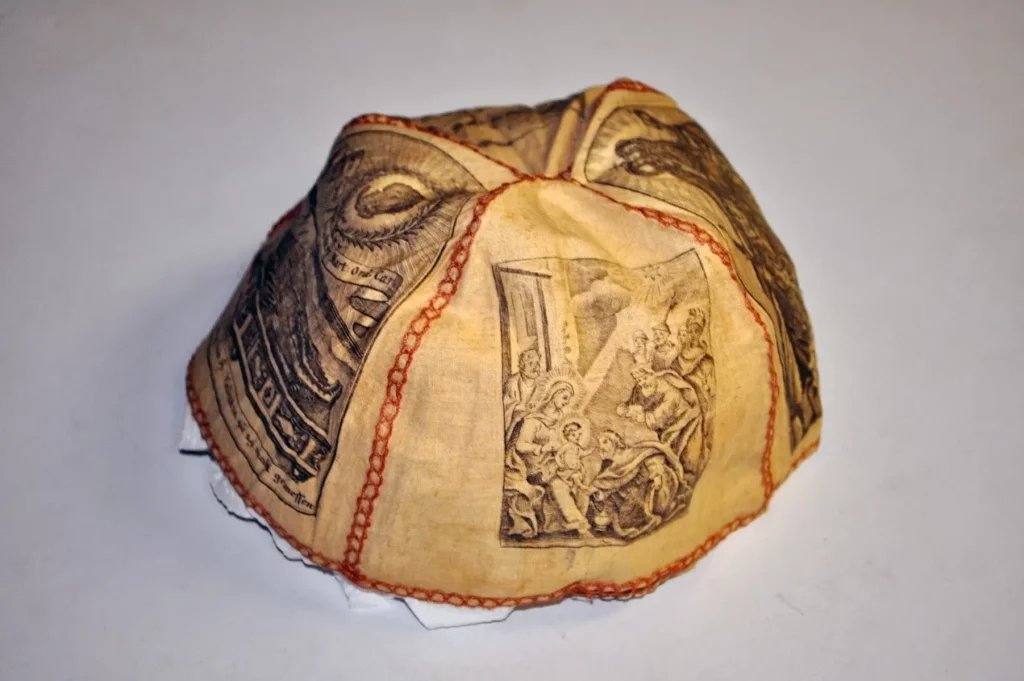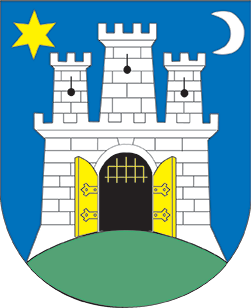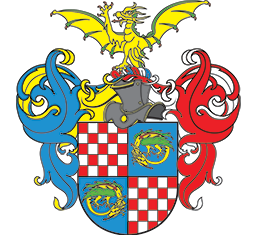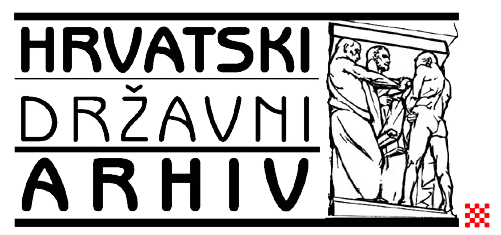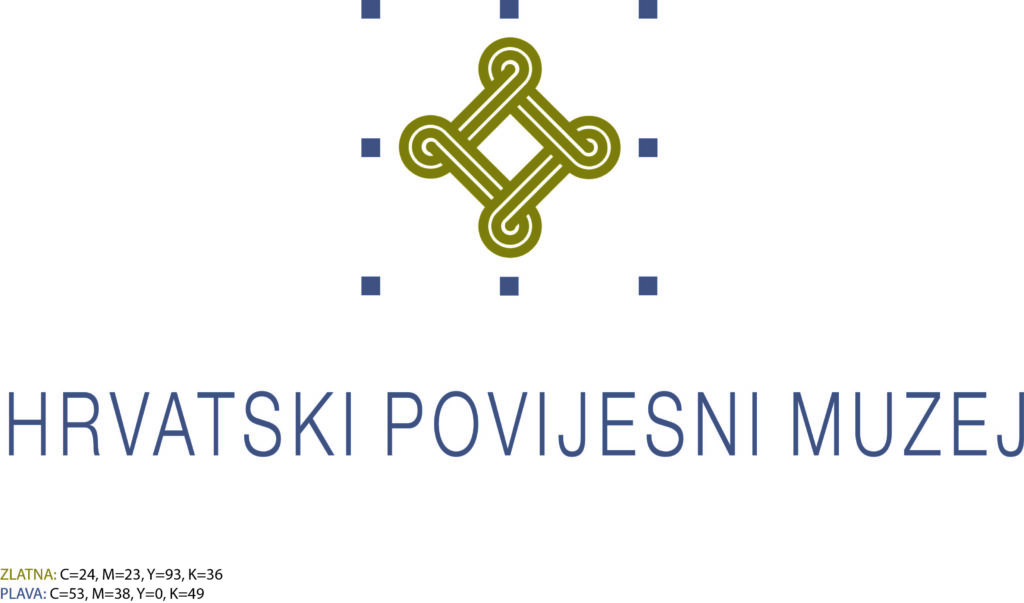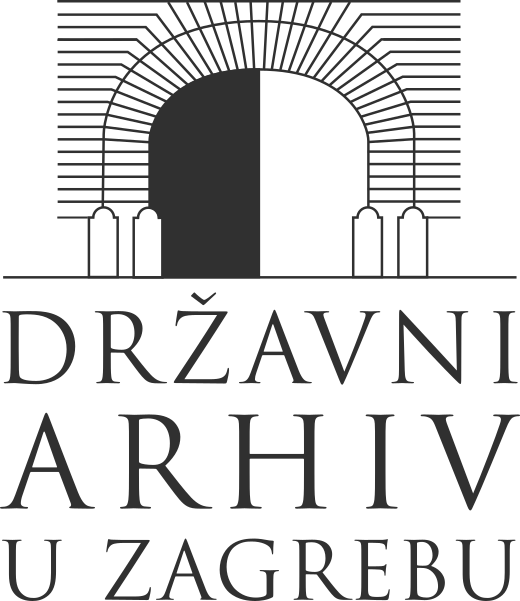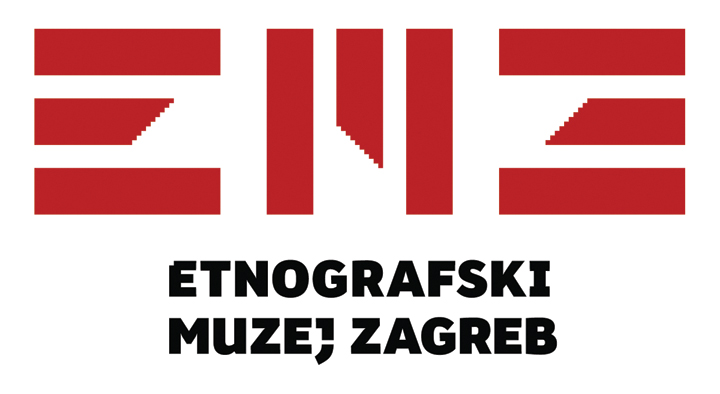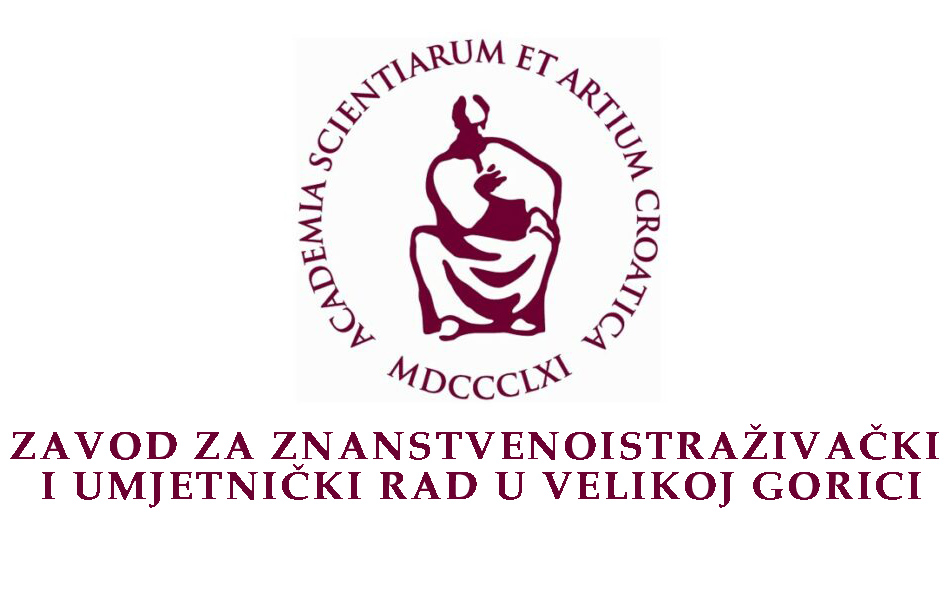9. Liaising with Zagreb City Museum 'til death
After the conclusion of the Cultural-Historical Exhibition of the City of Zagreb, held to commemorate the 1000th anniversary of the Croatian Kingdom, the City Administration awarded temporary space to the Museum at the ground-floor premises of the Art Pavilion. A large number of objects collected for the exhibition were handed over to the museum, thanks to the efforts and engagement of the exhibition committee.
On June 23, 1926, the City Representative Office took over the City Museum and entrusted its management to a three-member curatorship chaired by the City Mayor, Vjekoslav Heinzel. Members of the curatorship were elected as follows: Emilij Laszowski, then the former director of the City Museum and the current director of the State Archives, Gjuro Szabo, the long-time director of the Arts and Crafts Museum, and Monsignor Svetozar Rittig, vicar and the city councillor. Until the statutes were adopted, the curatorship was supposed to handle all technical and administrative matters concerning the museum.
At the same session, the mayor announced that the Museum had been arranged for opening thanks to Ljubo Babić, Emilij Laszowski, Andrija Milčinović, and Stjepan Pužar, and was ready for opening. The Museum was opened on August 14, 1926. The opening was attended by representatives of the City Council, government, military, clergy, cultural and scientific institutions, civic societies, and the media of the time reported in their articles on the museum opening and permanent exhibition.
Revenue from ticket sales in the first 14 days was donated to the Red Cross for the needs of those affected by the flood. Afterwards, the museum, like all museums in Zagreb, was open on Thursdays and Sundays from 10 a.m. to 1 p.m.
9.7: Notice on election of Emilij Laszowski as a member of the National Committee of the Red Cross to help the flood victims in Zagreb
Zagreb, July 18, 1926
Considering that Laszowski was appointed to this committee a month before the opening of the Museum in the Art Pavilion, it is most likely that the idea of giving the proceeds from the sold tickets to flood victims came from him.
HDA
After the exhibition, as the president of the City Museum curatorship, Emilij Laszowski continued to work tirelessly for the museum and advocated for collection of objects of Zagreb heritage. One of the important tasks of this curatorship was to adopt the statute. The City Museum, now under the administration of the City Administration, received a new name and its first statute – the Statute of the Zagreb, City Museum which was adopted on July 13, 1928.
9.20: Correspondence between the municipality of Sv. Nedjelja, the City Administration and Emilij Laszowski regarding the return or purchase of objects for the museum
Sv. Nedjelja, Zagreb, May 1927
In a letter from the municipality of Sv. Nedjelja the City Administration is requested to return or purchase objects that were given for display at the Cultural and Historical Exhibition of the City of Zagreb. The City Administration refers the object to Laszowski, who provides an expert assessment of the object. His assessment “of considerable cultural-historical value” was confirmed by the continuous display of these objects from the Cultural-Historical Exhibition in 1925 to the present day.
HDA
Emilij Laszowski remained connected to the museum he founded until his death. He continued to donate objects of Zagreb provenance to the museum, such as business cards, tickets, dance cards, badges and medals of societies, organisations, and associations, city maps, books, and magazines. Most of these objects were donated by Laszowski at his old age in 1946 when he received thank-you notes on behalf of the Zagreb City Museum from Krešimir Filić and Franjo Buntak. After many hardships he went through in the Second World War and afterwards, fully aware of his position in society, Laszowski pointed out to Krešimir Filić, Director of the Zagreb City Museum, that he did not want to be singled out in his speech at the opening of the Museum. The fact that he came to this opening at his old age reveals his greatness and love for the Museum. Not long after this opening, the Zagreb City Museum was moved to a part of the building of the former monastery of Clarisse nuns at Opatička ulica 20. It was in this very building, at the end of the 17th century, that the abbess and head of the monastery Judita Petronila Zrinska, daughter of Peter and Katarina Zrinska, spent part of her life. Placement of the Zagreb City Museum in this building united two of Laszowski’s loves: the Zrinski and Frankopan family and the city Museum. Unfortunately, Laszowski was not present at the opening of the Permanent Exhibition of the Zagreb City Museum on November 30, 1949; two days before the opening of the Museum, on the evening of November 28, 1949, Emilij Laszowski finished his earthly journey.
9.28: Invitation to Emilij Laszowski for the opening of the Museum of the City of Zagreb
Zagreb, March 24, 1946
HDA
9.29: Clippings from the newspaper about the opening of the Museum of the City of Zagreb and Emilij Laszowski’s comment with the clippings
Zagreb, 1946
I was at the opening. I begged Dr. Filić not to single me out, because it is not proper. A good friend of mine warned him about that as well. And he didn’t mention me in his speech. Thank you to him. Mr.? (illegible) was speaking and Filić
HDA
Laszowski lived his work. The environment in which he grew up, his grandfather’s rich library, collections of valuable objects, the archive of Brlog, in short – heritage woven into his being, was the foundation from which Laszowski built the institutional framework in which he preserved and made heritage accessible to users. The passion for heritage preservation probably also drove his collaborators, and countless hours of work surely inspired many of his contemporaries to follow his example. Growing up in a noble family, absorbing his grandfather’s words and treatment of farmers, he learned to appreciate those who were in a less favourable situation than him and to have compassion for the weak or helpless, which was evident in his entire work. The City Museum was certainly not Laszowski’s first or priority job. Yet Laszowski is rightly called the founder because today’s Zagreb City Museum, materially, spatially, and professionally, developed thanks to the solid foundations Laszowski laid.
Laszowski was the head, curator, and only employee of the city museum for 18 years. However, from the first year of its establishment, overcrowded museum space and the inability to move to a larger building prevented the realisation of the museum’s basic function – communication through exhibitions. The space also limited research of museum material and consequently publication of professional museum papers. However, all of this did not discourage Laszowski; he did not give up collecting museum objects or emphasising the need and importance of recording data about the objects. Working in multiple institutions surely prevented complete dedication to one area, immersion, and deepening of knowledge in that area. On the other hand, perhaps it was precisely this diverse work that ensured that Laszowski always clearly discerned which material belonged to the museum, which belonged to the archives or the library, and the boundaries of collecting museum material are clear as well. At the meeting of the City Museum curatorship on August 9, 1926, Prof. Gjuro Szabo proposed that the museum leadership take on a broader scope, i.e., outside the borders of the Zagreb municipality. Emilij Laszowski opposed this and gave his opinion:
Zagreb City Museum should stick to that activity which strictly intersects with the life of the city itself, with its historical and cultural past.
This precisely is the important part of the mission of the Zagreb City Museum, which this museum fulfils to this day.
9.46: Cap of fortunate death
Author unknown, 19th century
Laszowski donated the cap to the Museum in 1926. He wrote the description himself on the item card, and he added that the cap was from the legacy of Baroness Balby, probably from Vienna, and that it was common in Zagreb.
Laszowski’s death came after the death of his wives, mother and daughter, after he, as the founder of the museum, was omitted, symbolically dead, and after another of his endeavours – the “Brethren of the Croatian Dragon” Society – was shut down, i.e. died. Even then Laszowski did not surrender. He preserved his lifeforce, courage and desire to work until the very end. We do not know what the cap of fortunate death meant, but the Virgin Mary, who is painted on one part of that cap, is the same one to whom he prayed after he visited the premises of the Society, the museum and the library for the last time. Maybe it was through Her that he found eternal peace.
MGZ




